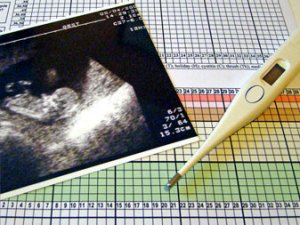Catholic Medical Quarterly Volume 62(4) November 2012
Practical medical Ethics
Discussing Natural Family Planning
Dr Adrian Treloar, MRCGP, MRCP, MRCPsych
 Discussing
natural family planning in surgery, at work and also among the
communities in which we live provides a rich opportunity to
support couples in their journey of love. Natural Family
Planning (NFP) is effective, [1], usable, and can bring great
benefits for those who use it. It can be used both to promote
avoiding pregnancy and also to promote fertility in those who
are struggling to conceive.
Discussing
natural family planning in surgery, at work and also among the
communities in which we live provides a rich opportunity to
support couples in their journey of love. Natural Family
Planning (NFP) is effective, [1], usable, and can bring great
benefits for those who use it. It can be used both to promote
avoiding pregnancy and also to promote fertility in those who
are struggling to conceive.
Benefits include
- Effective [1]
- Stronger communication between husband and wife about fertility and sexuality [2,3,4]
- Lower divorce rate [5] [6] [7]
- Using fertility awareness makes you more aware of your fertility and can help to plan a pregnancy or avoid a pregnancy.
- Increased mutual trust [8] with more positive attitudes to sexuality and lower feelings of helplessness for women.
- Men benefit too from deeper knowledge and understanding of their wife’s fertility
- It does not involve using any chemicals or physical devices, and is thus free from the risks of the pill or genital infections etc, .
- Is scientifically based.
- It is acceptable to all faiths and cultures.
NFP: forgotten by most doctors and nurses.
A core requirement for all providers of family planning in this country is that they are competent to discuss all methods of family planning. So it is tragic to repeatedly find that many colleagues who have gained qualifications in family planning do not understand NFP and, in fact, are often not even taught it. So it is a scandal (but no surprise) that they cannot teach it and routinely describe it as ineffective, or use outdated terms such as the “Rhythm Method” or even “Vatican Roulette”. Such terms are utterly unjustified for NFP as it does not rely on rhythm and it has been shown to be significantly more effective than other methods. So it’s very sad to see that the FPA still refers to the rhythm method as part of the descriptor of NFP [9] and that despite their acceptance of 99% effectiveness when correctly used (which is higher than many other methods) NFP continues to be downplayed by organisations such as the FPA and the NHS.
A good option for patients
 NFP
can be a part of the consultation both for patients who are not
conceiving and also for those who do not wish to. For those who
are struggling to conceive it is easy to raise the subject. NFP
and NaProTec [10] work and are effective. According to the
Natural Family Planning Teachers Association, 33% of sub-fertile
couples conceive when the fertile time is pinpointed. That’s a
real opportunity for saving the NHS a fortune and it can obviate
the need for many couples to head straight for IVF. We have seen
many women conceive after such advice, some of whom had failed
even to conceive with IVF. For women who are seeking to avoid
conception, the topic can also be raised. While many will reject
the option, (perhaps at least in part out of societal prejudices
against NFP), some will find the discussion helpful and may also
go onto being taught NFP.
NFP
can be a part of the consultation both for patients who are not
conceiving and also for those who do not wish to. For those who
are struggling to conceive it is easy to raise the subject. NFP
and NaProTec [10] work and are effective. According to the
Natural Family Planning Teachers Association, 33% of sub-fertile
couples conceive when the fertile time is pinpointed. That’s a
real opportunity for saving the NHS a fortune and it can obviate
the need for many couples to head straight for IVF. We have seen
many women conceive after such advice, some of whom had failed
even to conceive with IVF. For women who are seeking to avoid
conception, the topic can also be raised. While many will reject
the option, (perhaps at least in part out of societal prejudices
against NFP), some will find the discussion helpful and may also
go onto being taught NFP.
Sensible advice
All doctors should be able to counsel women about contraception and abortion, so it’s right that, at times, Catholic GP’s will examine and take histories from women who are on oral contraception etc. Indeed, anyone prescribing antibiotics and other medicines for women of child bearing age should enquire about such things, as their actions might change the efficacy of other medicines being taken. If hypertension, or risk factors for thrombo-embolism are found, then good advice about stopping oral contraception may be life saving. If you are not willing to prescribe the pill, then it would be sensible to say why you are not. I used to admit that I was Catholic, but I also stated that, having thought carefully about it, I thought that the Church was right to take the position it does.
Then you can discuss NFP, maybe give a leaflet about it and ask the woman to come back if she wishes. It is always necessary to say that women should have some sort of training in NFP. It is probably right also to say that while Persona is good, its efficacy does appear to be less than NFP well used and well taught. It is sensible also, in a sensitive ad non-judgemental way to discuss some of the psychological benefits of NFP as well. NFP has a strong evidence base and patients deserve the opportunity of hearing about it.
With tact, kindness and honesty, women can be helped by doctors who are knowledgeable and trained in NFP. Conception can often (definitely not always) be achieved in infertile couples either using NFP or NaProTec methods.
Training for doctors
To do that work, you need to be well trained and able to discuss NFP. Resources offering training and fertility care include the Natural Family Planning Teachers Association, the Billings OM Reference Centre, as well as Naprotechnology resources [11].
Dr Treloar is a former GP who now works in secondary care.
References
- Ryder REJ. Natural Family Planning; Effective birth control supported by the Catholic Church. British Medical Journal 1993; 307: 723-726.
- Borkman T and Shivanandan M. “The impact of Natural Family on selected aspects of the couple relationship. International Review of Natural Family Planning 8 (1) (Spring 1984); 58-66.
- Klann N, Hahlweg K and Hank G. Psychologic aspects of NFP practice. Int J Fertil Supplement 1988; 65-69
- Klann, N. Hahlweg K, Sottong U et al. Sexual behaviour of NFP users: A psychological study with 250 men and women. Institut Europeen D’Education Familiale (IEEF) Conference, Birmingham, September 1997
- Wilson M. Divorce Rate Comparisons Between Couples Using
Natural Family Planning &
Artificial Birth Control. The Culture Of Life: Presuppositions And Dimensions, General Assembly of the Pontifical, Academy for Life, March 1 - 4, 2001, (Unofficial results) http://www.physiciansforlife.org/index2.php?option=com_content&do_pdf=1&id=193 - The centre for disease control found that of 1400 women using NFP none had been previously married. Fertility, Family Planning, and Reproductive Health of U.S.Women: Data From the 2002 National Survey of Family Growth. US Department of Health and Human services, US Centers for disease control and prevention. http://www.cdc.gov/nchs/data/series/sr_23/sr23_025.pdf
- Clowes B. The Facts of Life, an authoritative guide to life and family issues. Human Life International, Virginia 1997.
- Klann N, Hahlweg K, Hank G. Psychological aspects of NFP practice. JFertil 1988;33Suppl:65-9.
- Family Planning Association. Contraception: patterns of use factsheet (updated November 2007) http://www.fpa.org.uk/professionals/factsheets/contraceptionpatternsofuse#eljs
- Carus A. NaProTechnology: A medical, pro-life approach to infertility and miscarriage. Catholic Medical Quarterly Volume 62(4) November 2012 www.cmq.org.uk
- Resources include Natural Family Planning Teachers Association www.nfpta.org.uk, Billings OM Reference Centre www.woomb.org and Creighton Model www.creightonmodel.com and The London Centre for NaProTechnology www.naprotechnology.co.uk
